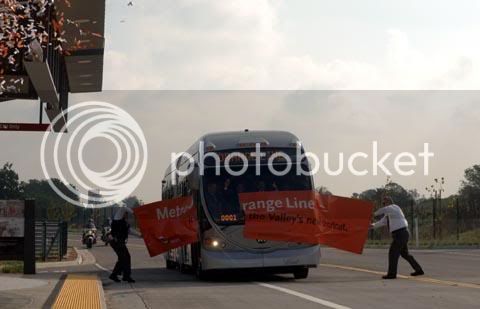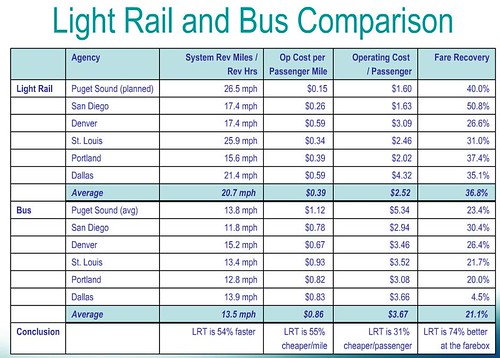While far from an advocate of bus transit, I do try to be fair and balanced (which is more than Fox News can say). As part of that effort I'm posting this L.A. Times article that characterizes L.A. Metro's Orange Line, a dedicated rapid busway using an old rail line in the San Fernando Valley, as an unsung success story.
Metro's humdrum workhorse (print edition headline)
"Less than a year after its opening, the Orange Line busway's projected ridership more than tripled to 22,000 a day, and a study by UC Berkeley researchers found it even slightly helped relieve morning traffic on the 101 Freeway, which parallels the busway. By May of this year, daily ridership had climbed to 26,670 on a line that was significantly cheaper to build than it's light-rail counterparts, such as the Blue, Green and Gold lines."
"...comparing costs of rapid bus lines and rail isn't simple, officials say. Rail costs more to build but can be less costly to operate, they say. That's particularly true as ridership grows, they add, because fewer employees can move many more passengers. They also note that some Metro rail routes, notably the Blue Line from downtown L.A. to Long Beach, and the Red Line from downtown L.A. to North Hollywood, carry significantly more riders than the Orange Line."
"There are few remaining places with dedicated rights-of-way, like the old rail corridor that made the Orange Line possible. And, as the controversial Wilshire bus lane project has shown, it's politically difficult to take space away from cars in traffic-clogged corridors.
"'I think we could grow it somewhat,' [L.A. County Supervisor Zev] Yaroslavsky said, noting that Orange Line buses often run so frequently they 'are on top of one another.'
"If the busway's popularity continues to grow, he said, it may need to be converted to a rail line."

Metro's humdrum workhorse (print edition headline)
"Less than a year after its opening, the Orange Line busway's projected ridership more than tripled to 22,000 a day, and a study by UC Berkeley researchers found it even slightly helped relieve morning traffic on the 101 Freeway, which parallels the busway. By May of this year, daily ridership had climbed to 26,670 on a line that was significantly cheaper to build than it's light-rail counterparts, such as the Blue, Green and Gold lines."
"...comparing costs of rapid bus lines and rail isn't simple, officials say. Rail costs more to build but can be less costly to operate, they say. That's particularly true as ridership grows, they add, because fewer employees can move many more passengers. They also note that some Metro rail routes, notably the Blue Line from downtown L.A. to Long Beach, and the Red Line from downtown L.A. to North Hollywood, carry significantly more riders than the Orange Line."
"There are few remaining places with dedicated rights-of-way, like the old rail corridor that made the Orange Line possible. And, as the controversial Wilshire bus lane project has shown, it's politically difficult to take space away from cars in traffic-clogged corridors.
"'I think we could grow it somewhat,' [L.A. County Supervisor Zev] Yaroslavsky said, noting that Orange Line buses often run so frequently they 'are on top of one another.'
"If the busway's popularity continues to grow, he said, it may need to be converted to a rail line."






